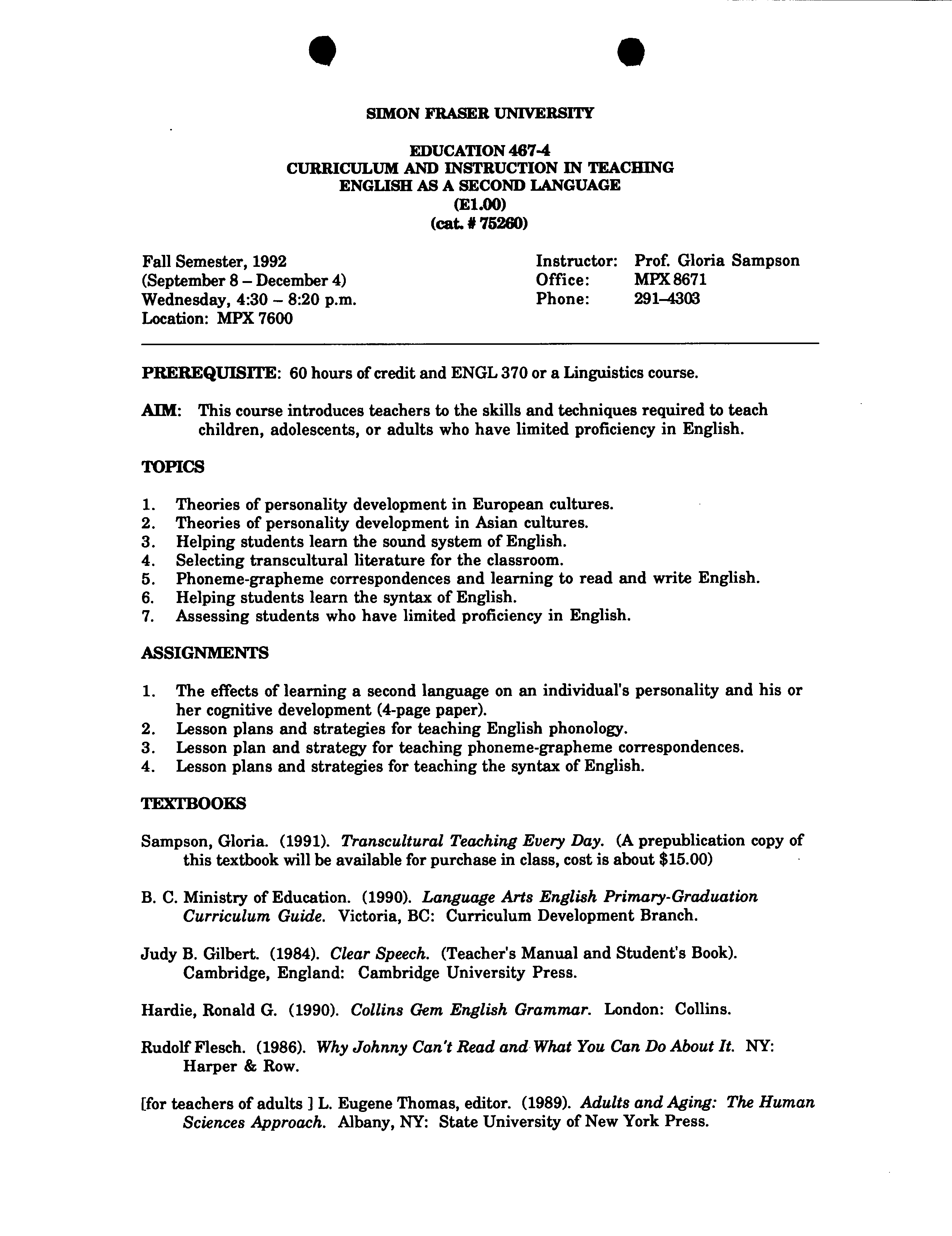I
?
S
SIMON FRASER UNIVERSITY
EDUCATION 467-4
?
CURRICULUM AND INSTRUCTION IN TEACHING
?
ENGLISH AS A SECOND LANGUAGE
?
(E1.00)
?
(cat U 75260)
Fall Semester, 1992
?
Instructor: Prof. Gloria Sampson
(September 8- December 4) ?
Office: ?
MPX 8671
Wednesday, 4:30 - 8:20 p.m.
?
Phone: ?
291-4303
Location: MPX 7600
PREREQUISITE:
60 hours of credit and ENGL 370 or a Linguistics course.
AIM: This course introduces teachers to the skills and techniques required to teach
children, adolescents, or adults who have limited proficiency in English.
TOPICS
1.
Theories of personality development in European cultures.
2.
Theories of personality development in Asian cultures.
3.
Helping students learn the sound system of English.
4.
Selecting transcultural literature for the classroom.
5.
Phoneme-grapheme correspondences and learning to read and write English.
6.
Helping students learn the syntax of English.
7.
Assessing students who have limited proficiency in English.
ASSIGNMENTS
1.
The effects of learning a second language on an individual's personality and his or
her cognitive development (4-page paper).
2.
Lesson plans and strategies for teaching English phonology.
3.
Lesson plan and strategy for teaching phoneme-grapheme correspondences.
4.
Lesson plans and strategies for teaching the syntax of English.
TEXTBOOKS
Sampson, Gloria. (1991).
Transcultural Teaching Every Day. (A
prepublication copy of
this textbook will be available for purchase in class, cost is about $15.00)
B.
C. Ministry of Education. (1990). Language Arts English Primary-Graduation
Curriculum Guide.
Victoria, BC: Curriculum Development Branch.
Judy B. Gilbert. (1984).
Clear Speech.
(Teacher's Manual and Student's Book).
Cambridge, England: Cambridge University Press.
Hardie, Ronald G. (1990).
Collins Gem English Grammar.
London: Collins.
Rudolf Flesch. (1986). Why Johnny Can't Read and What You Can Do About It. NY:
Harper & Row.
[for teachers of adults] L. Eugene Thomas, editor. (1989).
Adults and Aging: The Human
Sciences Approach.
Albany, NY: State University of New York Press.

